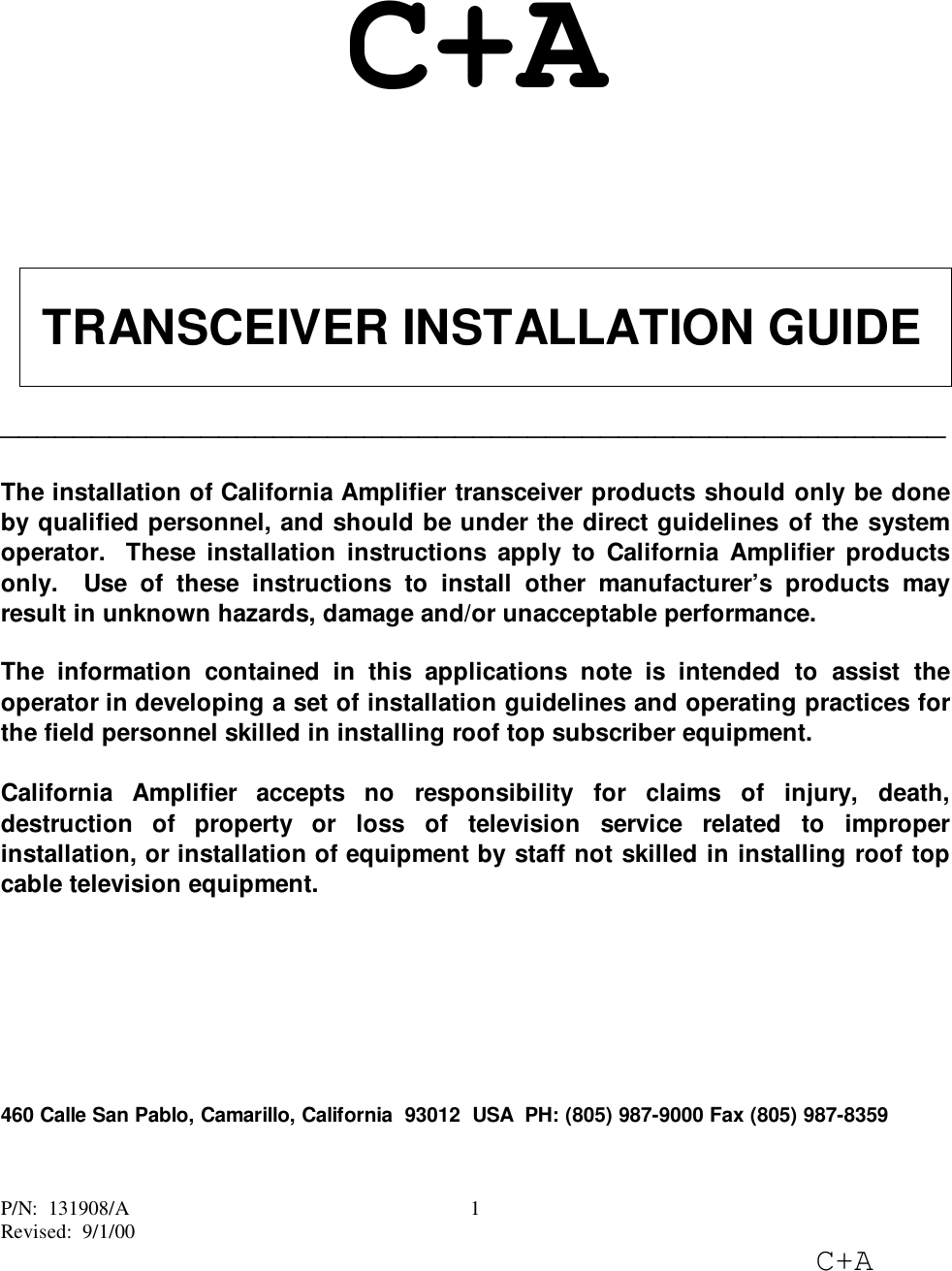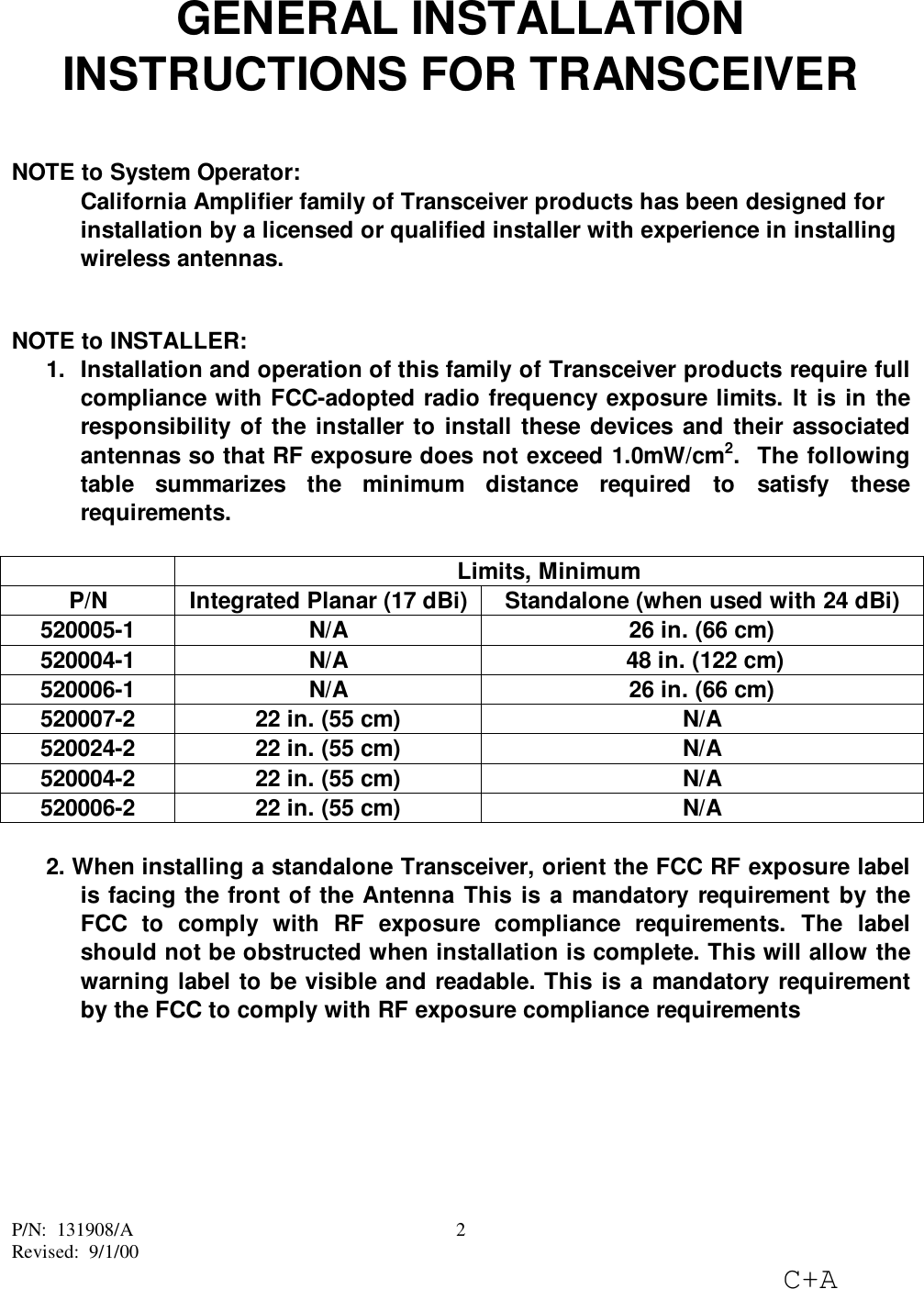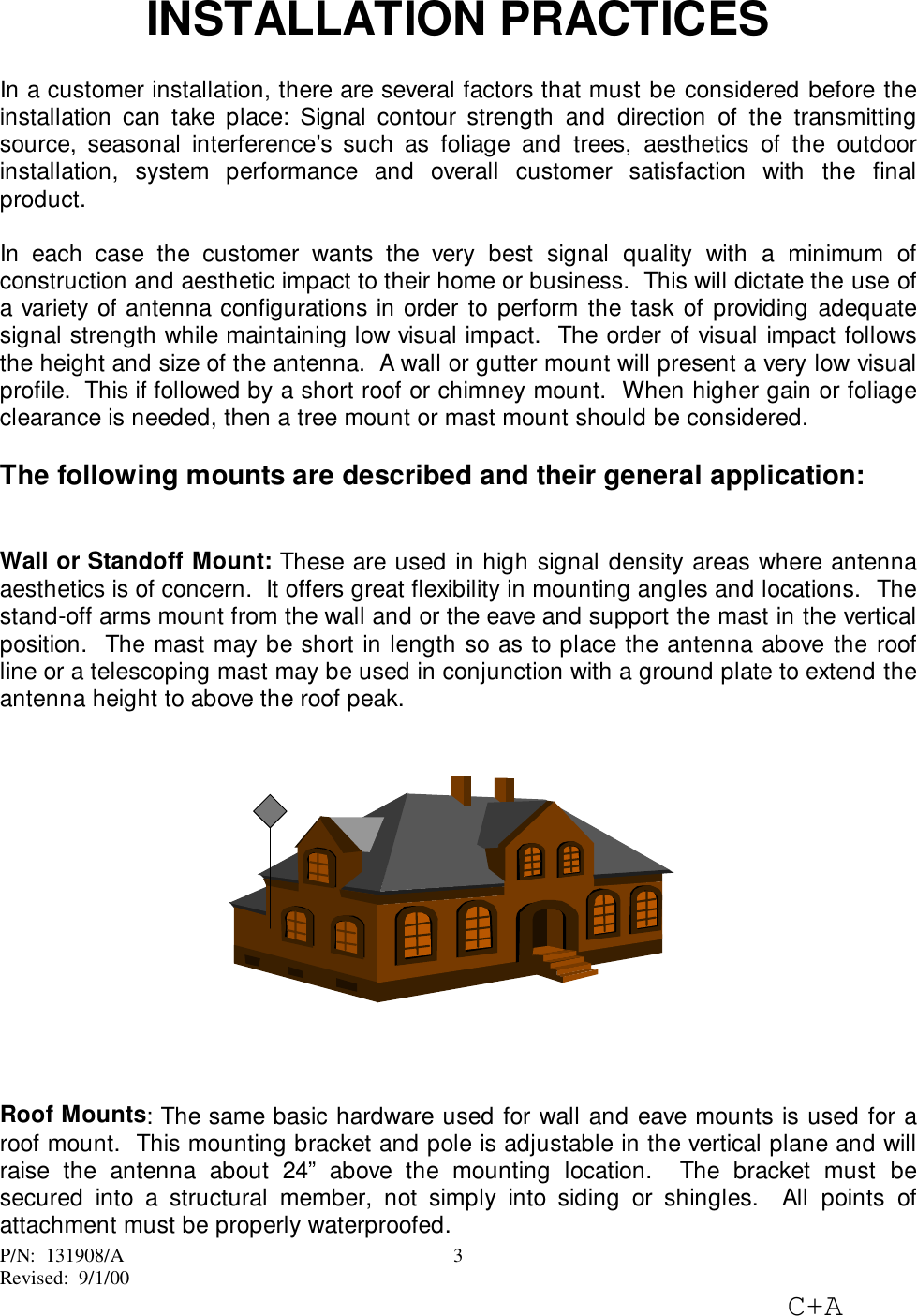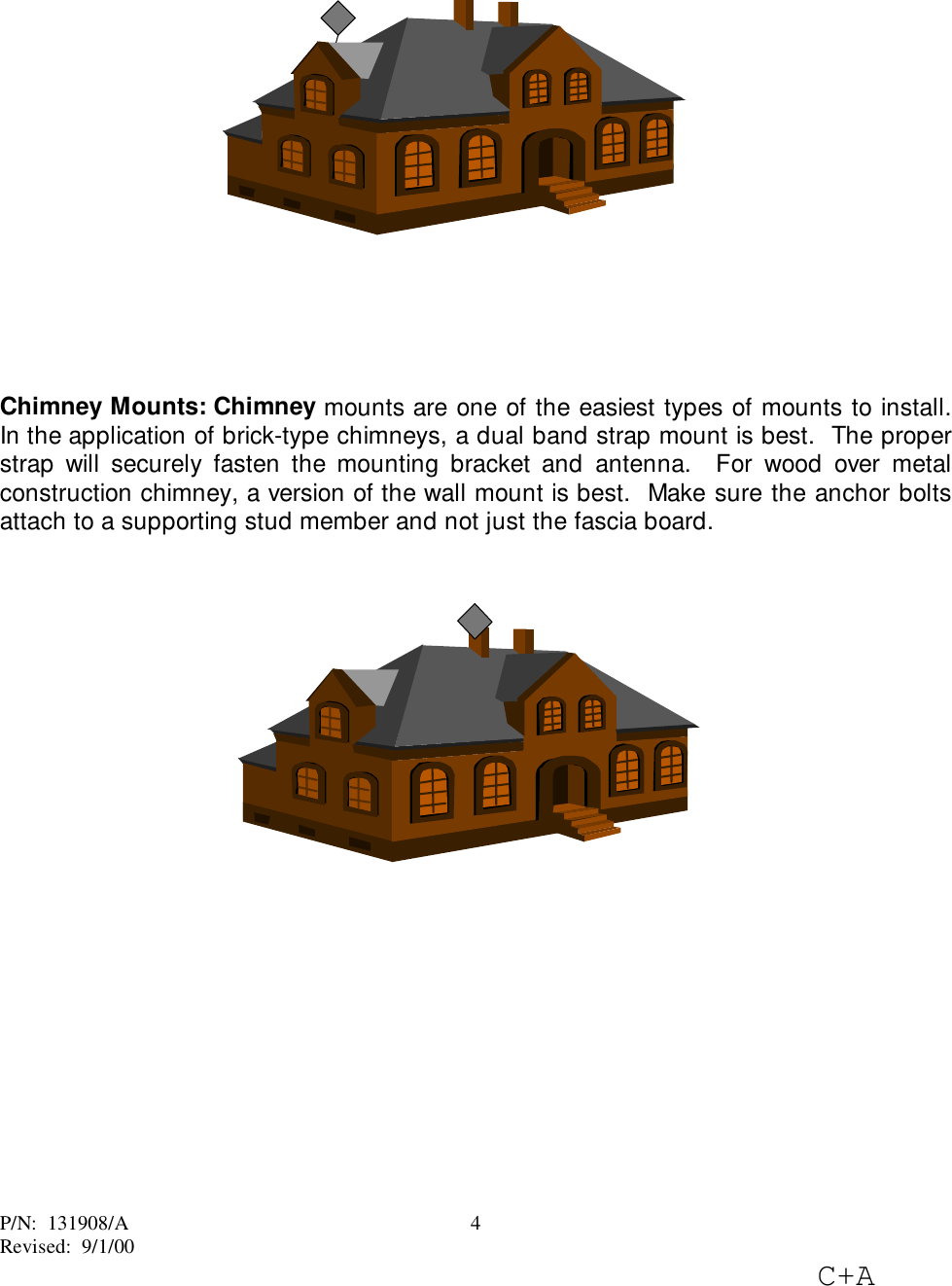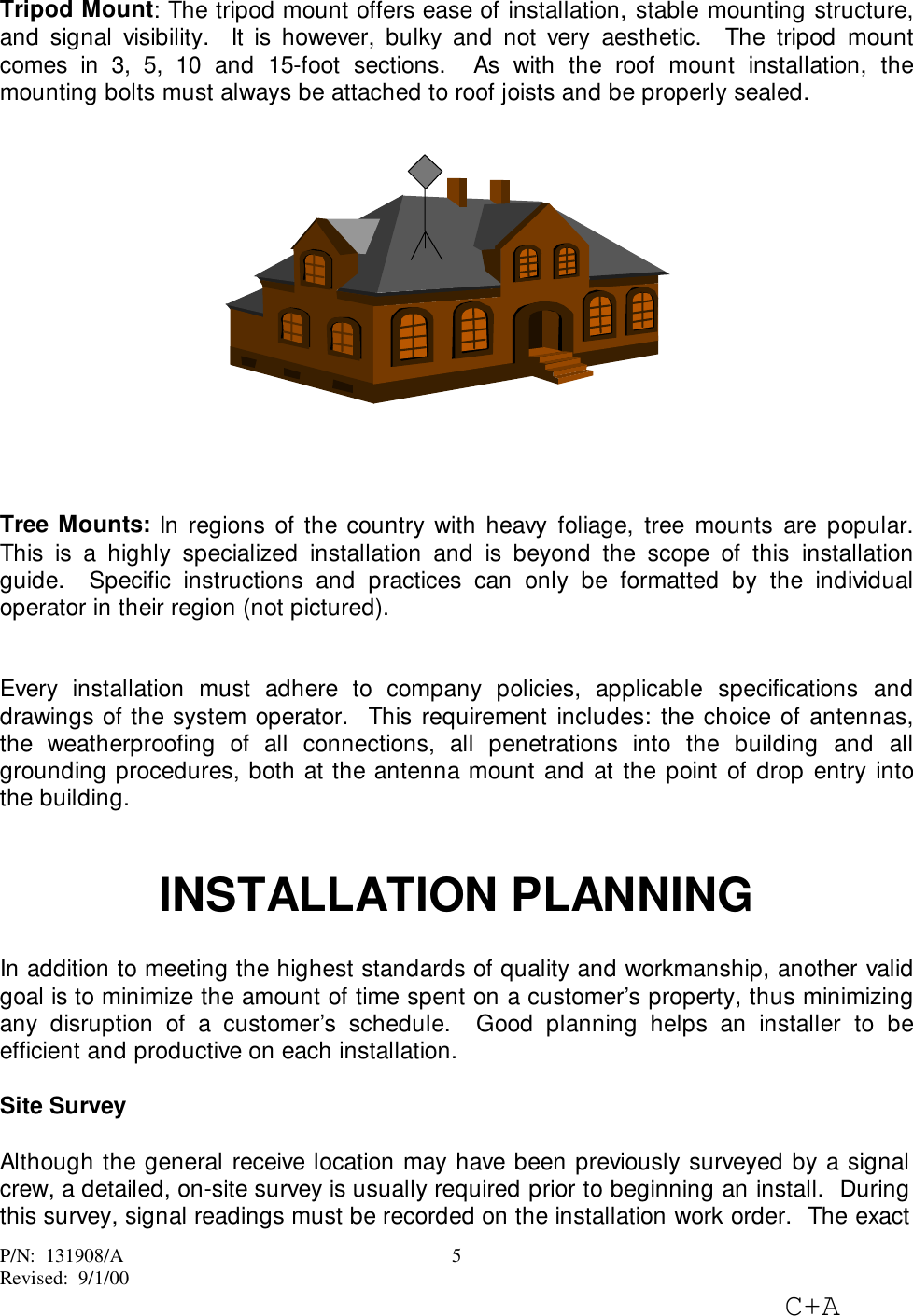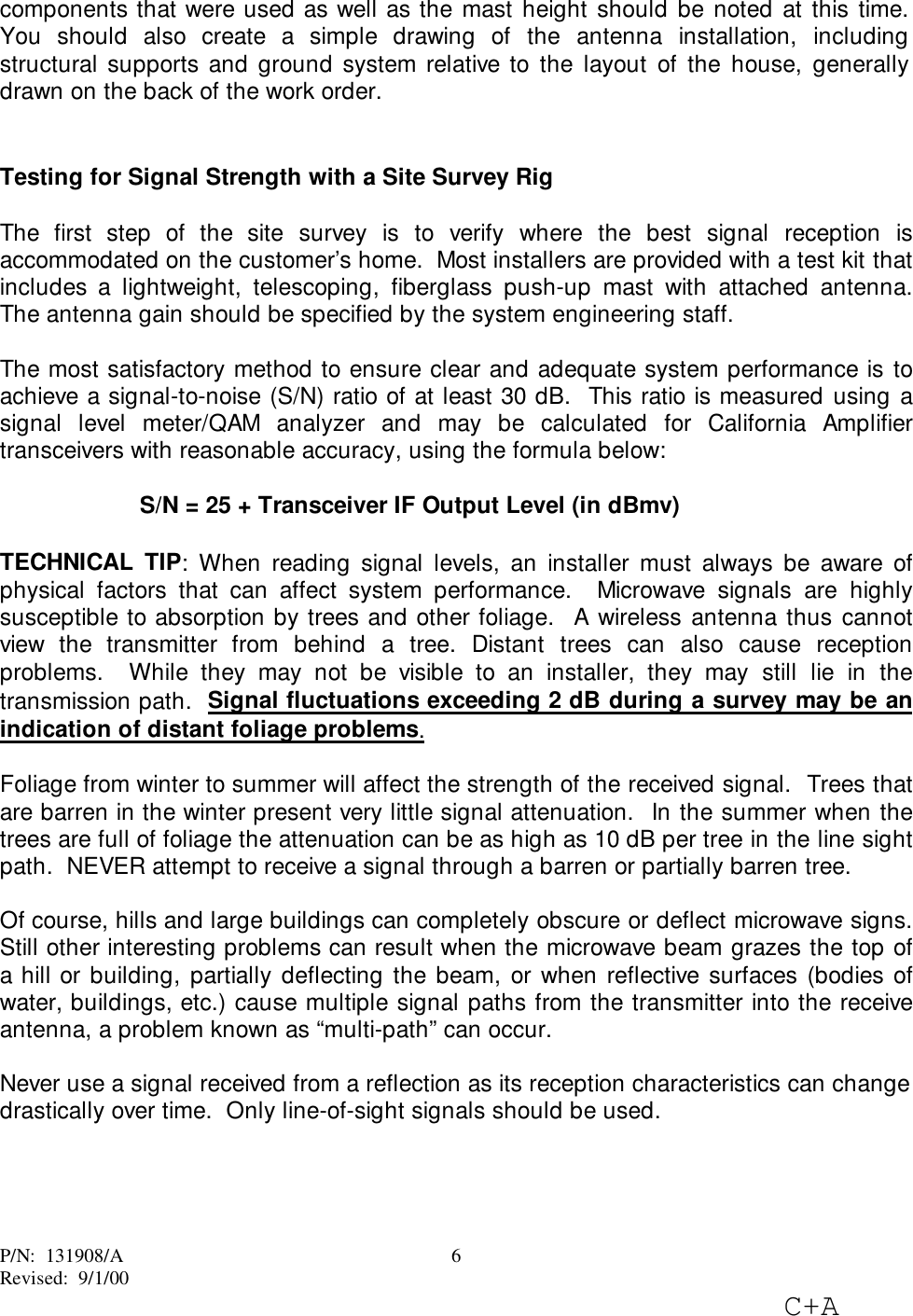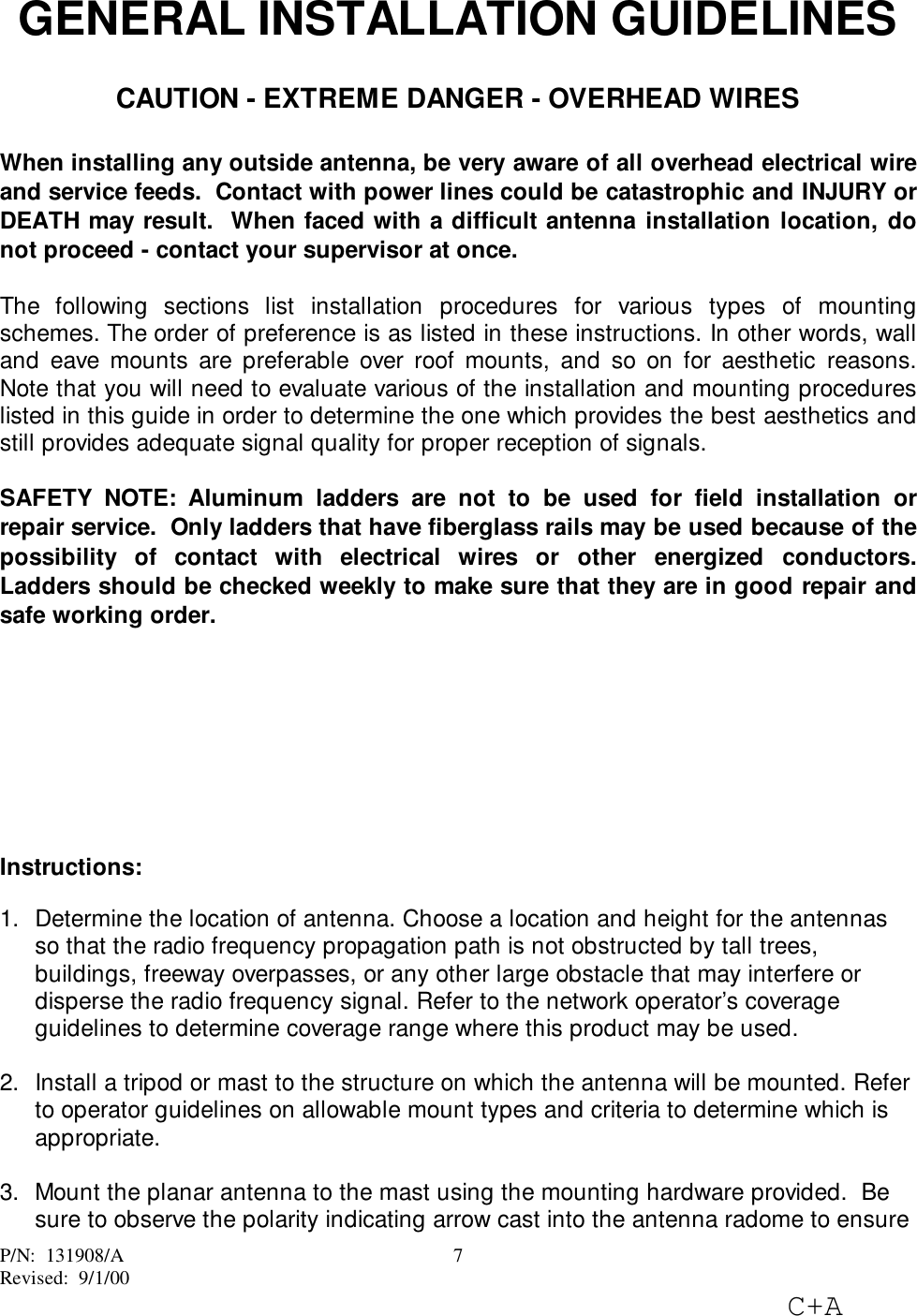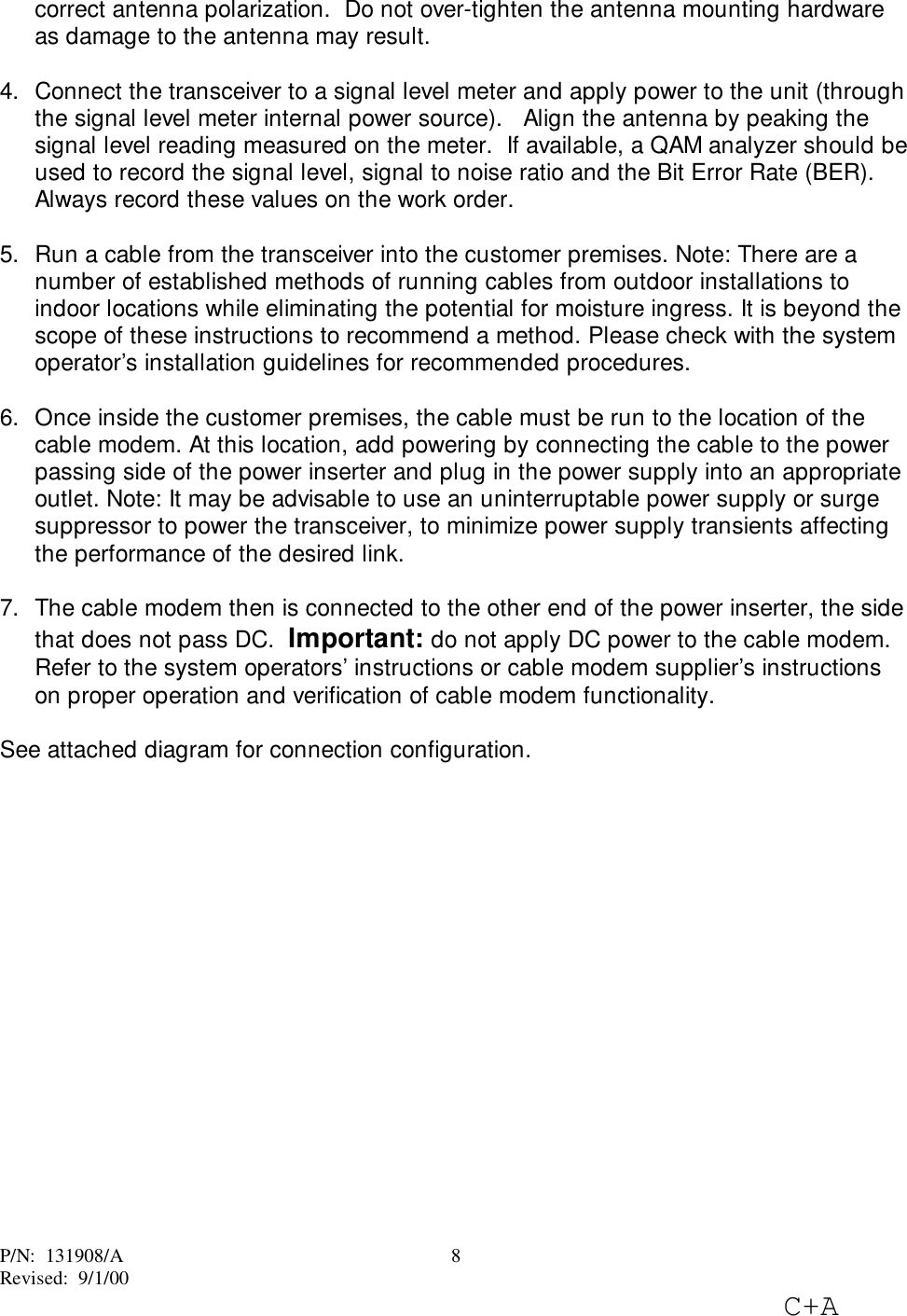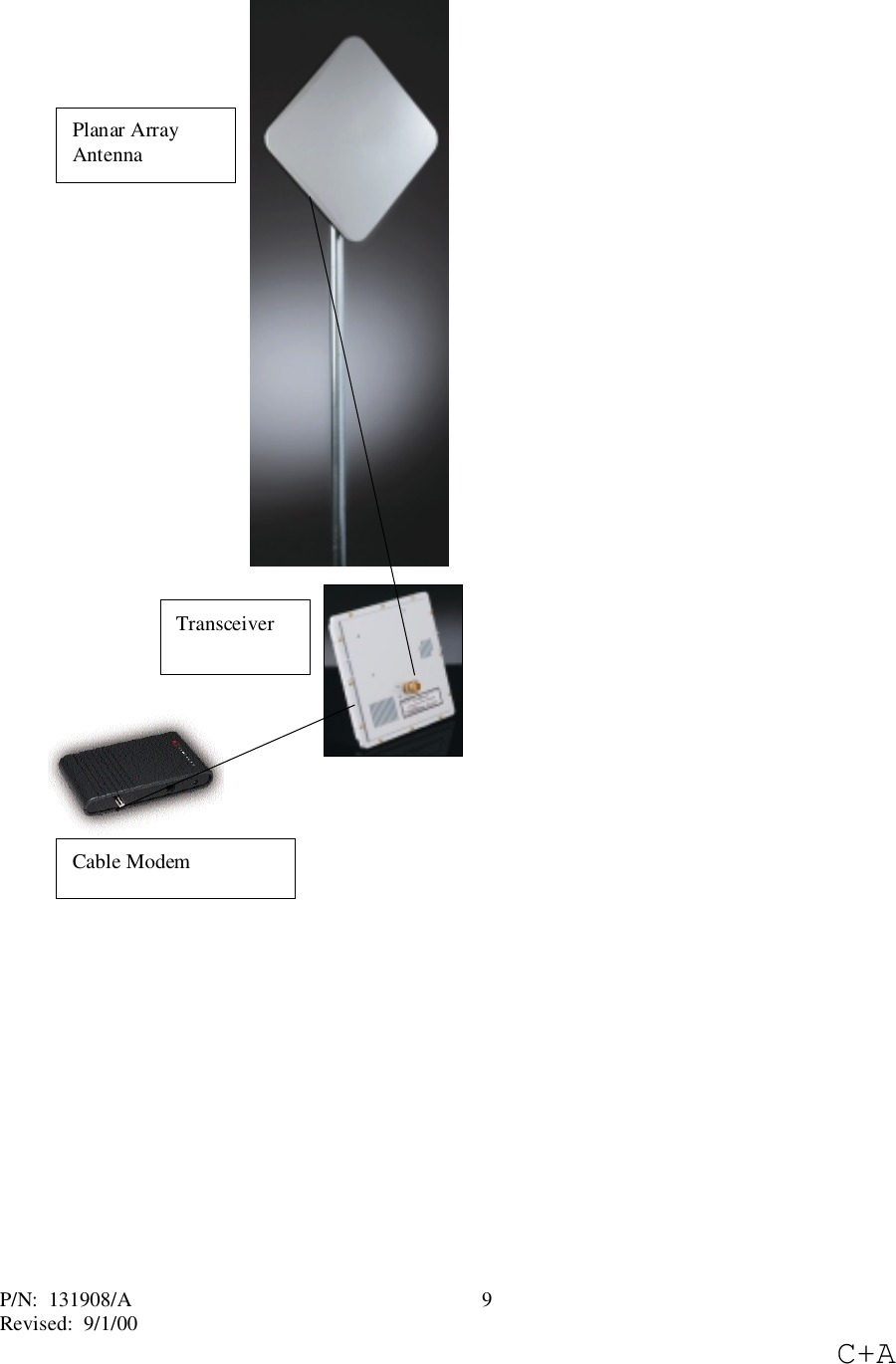CalAmp 520006 Wireless Cable Modem Transceivers, 520006-1 & 5200 User Manual transceiver installation guide
CalAmp Corp. Wireless Cable Modem Transceivers, 520006-1 & 5200 transceiver installation guide
CalAmp >
Contents
- 1. User manual
- 2. Page 1 of installation instructions
- 3. transceiver installation guide
transceiver installation guide
